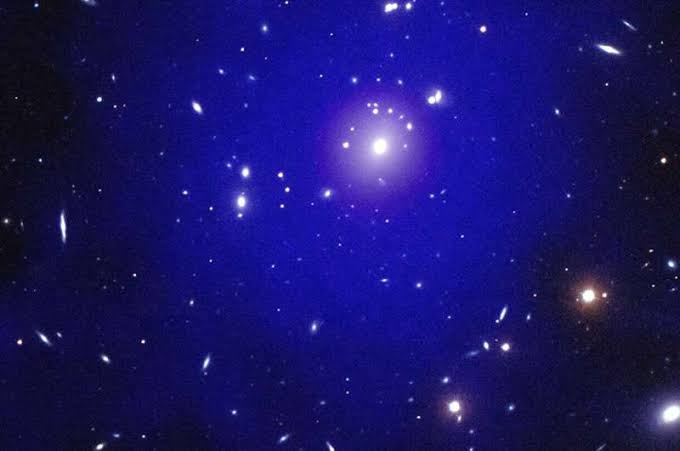Astronomers keep running out of resources as they try to inventory the local cosmos. This discrepancy might be explained by a recent finding from NASA’s Chandra X-ray Observatory regarding a system of colliding galaxy clusters.
Although scientists have learned a lot about the universe’s makeup, there has remained a perplexing issue they have been unable to resolve: there is a sizable amount of matter that has not yet been taken into consideration.
Is This The Missing Mass Dark Matter?
This missing mass is not the dark matter, which makes up the vast majority of the cosmic matter.
Studies of the local universe, or places within a few billion light-years of Earth, have not yet discovered around a third of the “typical” stuff that was produced in the first billion years or so following the big bang.
The Warm-Hot Intergalactic Medium
Hydrogen, helium, and other elements make up the stuff that stars, planets, and people are made of. In the region between galaxies and clusters of galaxies, there are enormous strands, or filaments, of warm to hot (temperatures of 10,000 to 10,000,000 kelvin) gas that may contain at least some of the missing material, according to theoretical predictions made by astronomers.
This is known as the WHIM, or “warm-hot intergalactic medium.” It’s possible that this WHIM is present in the region between two galaxy clusters that are colliding because Chandra was used to observe the system.
Only a few examples of these strands of missing matter have been discovered, according to study leader Arnab Sarkar of the Center for Astrophysics | Harvard & Smithsonian (CfA) in Cambridge, Massachusetts. We are thrilled that we may have located another.
Abell 98
Abell 98, a galaxy cluster about 1.4 billion light-years from Earth that is merging with another, was examined with Chandra. The Chandra data indicate a bridge of X-ray emission between two of the colliding clusters, which comprise gas with a temperature of around 20 million kelvins and cooler gas with a temperature of about 10 million kelvins.
The bridge is hotter because gas from the two clusters is likely overlapping there. The temperature and density of the cooler gas are comparable to those of the hottest and densest gasses in the WHIM, respectively.
The Observation Of A Sonic Boom
Additionally, a shock wave that resembles a sonic boom from a supersonic aircraft is visible in the Chandra data. One of the galaxy clusters, which is beginning to collide with another cluster, is the source and the location of this shock wave.
This is the first instance of a galaxy cluster collision’s shock wave that has been discovered before the cluster’s cores have passed one another.
According to co-author Scott Randall, also of CfA, “We think this shock wave is an important discovery since our models have indicated such features should be there, but we haven’t seen one until now.” They play a crucial role in the early collision phase that finally results in the clusters merging.
Because it has heated the gas between the clusters as they collide, this shockwave may be directly related to the detection of the WHIM in Abell 98. The gas in the WHIM filament, which is thought to contain 400 billion times the mass of the Sun, may have been heated up sufficiently as a result to be identified in Chandra data.
Conclusion
The biggest formations in the cosmos bound together by gravity are galaxy clusters. Numerous galaxies, massive amounts of hot gas, and vast dark matter reservoirs are all present in them. Scientists think that they combined with one another over millions or billions of years to grow to their huge size.
“When galaxy clusters collide, we get the chance to investigate extreme physics that we seldom find in any other cosmic environment,” said Yuanyuan Su, a co-author from the University of Kentucky.
